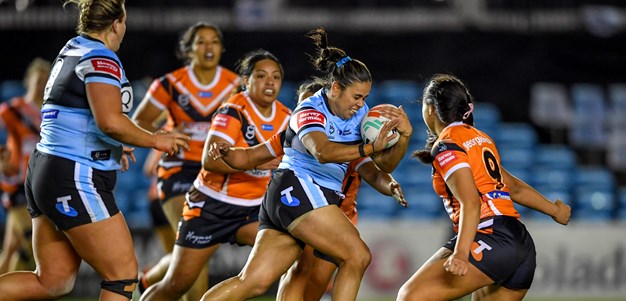

Dr George Pitsis from the Sports Science Medicine Centre located on the Kingsway at Miranda, deals with any injury and illness which may come the way of the Sharks playing group or staff.
A highly respected doctor and specialist adult and paediatric sport and exercise medicine physician, Dr Pitsis joined the medical staff at the Sharks during 2013. He is highly qualified with over 15-years experience as the team physician for many high calibre sports teams.
As a new feature on the Sharks website this is the first installment of 'Sports Medicine – with Dr George Pitsis', where he explains both common and not-so-common sports injuries.
This week he takes a look at Lisfranc foot Injuries, what they are, how they happen and the prognosis for those who suffer such an injury.
Lisfranc Injury
What is it?
Dr Lisfranc, physician for Napoleon’s cavalry, first described this injury in soldiers on horseback after falling off with their foot getting caught in the stirrup causing a hyper dorsiflexion injury of the midfoot.
Injury to the ligament complex in the midfoot joint between the medial cuneiform and the base of the 2nd metatarsal (Sagittal subtype). Occasionally you can get involvement of the 2nd-5th tarso-metatarsal joints (Homolateral subtype). It often involves small avulsion fracture(s) hence being classified as a fracture-dislocation injury.
How does it happen? (mechanism of injury)
Most commonly occurs as a forced plantar-flexion and/or twisting injury of the midfoot.
Symptoms
Significant pain is felt through the midfoot. It is a very disabling injury and causes difficulty with walking or any weight bearing. There is usually not much associated swelling.
Examination
Lack of swelling. Maximal tenderness over the Lisfranc ligament complex. Inability to single leg calf raise with associated pain and weakness. Positive provocative tests include pain with midfoot rotation, shear stress across the ligament (Ballotment test), and pushing down on the 2nd toe metatarsal head (Piano Key sign)
Investigations
Bilateral weight bearing AP X-rays can reveal increased gapping (diastasis) in the joint, being a grade 3 injury. You may also see avulsion fractures (Fleck sign). A PA X-ray (Dancer’s view) can better pick up a Fleck sign.
CT scan is the gold standard for detecting associated avulsion fractures. A bone scan will be positive for the injury, however in non-specific for grading the injury. An MRI is the gold standard for assessing the grade of ligamentous injury.
Treatment
Early diagnosis and grading the injury is the key to effective treatment. General treatment includes RICE and analgesia.
Grade I – strain of the Lisfranc ligament complex. Will require a treatment in a cam walker air cell boot for 4-8 weeks, often with a period of non-weight bearing with crutches early on.
Grade II – partial tear of the Lisfranc ligament complex. Will require treatment in a cam walker air cell boot for 6-12 weeks, with an initial period of non-weight bearing with crutches for a minimum of 6 weeks.
Grade III – complete tear of the Lisfranc ligament complex with instability. Requires surgery with fixation of the Lisfranc joint with diastasis screws.
In the day of Napoleon, the injury was so disabling that the only way people could return to weight bearing was to have a midfoot amputation.
When can I play again (return to activity)
Grade I: 6-12 weeks
Grade II: 3-6 months (can be season ending)
Grade III: 6 months (can be season ending)
What about the long term (prognosis)
Generally people do well, especially with early diagnosis and treatment. Delay in appropriate treatment can lead to a protracted period of pain and disability requiring further treatment options.
For the diagnosis and treatement of all sporting injury and related illness, contact the Specialist Sports Medicine Center in Miranda on 02 9525 3444 to make an appointment.
For more information on the Specialist Sports Medicine Centre visit their website at www.specialistsportsmed.com.au





